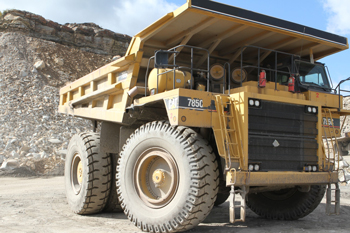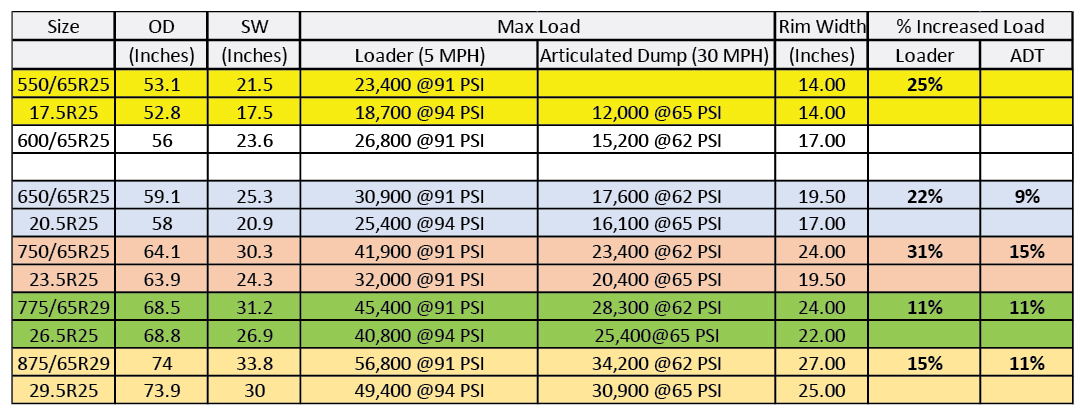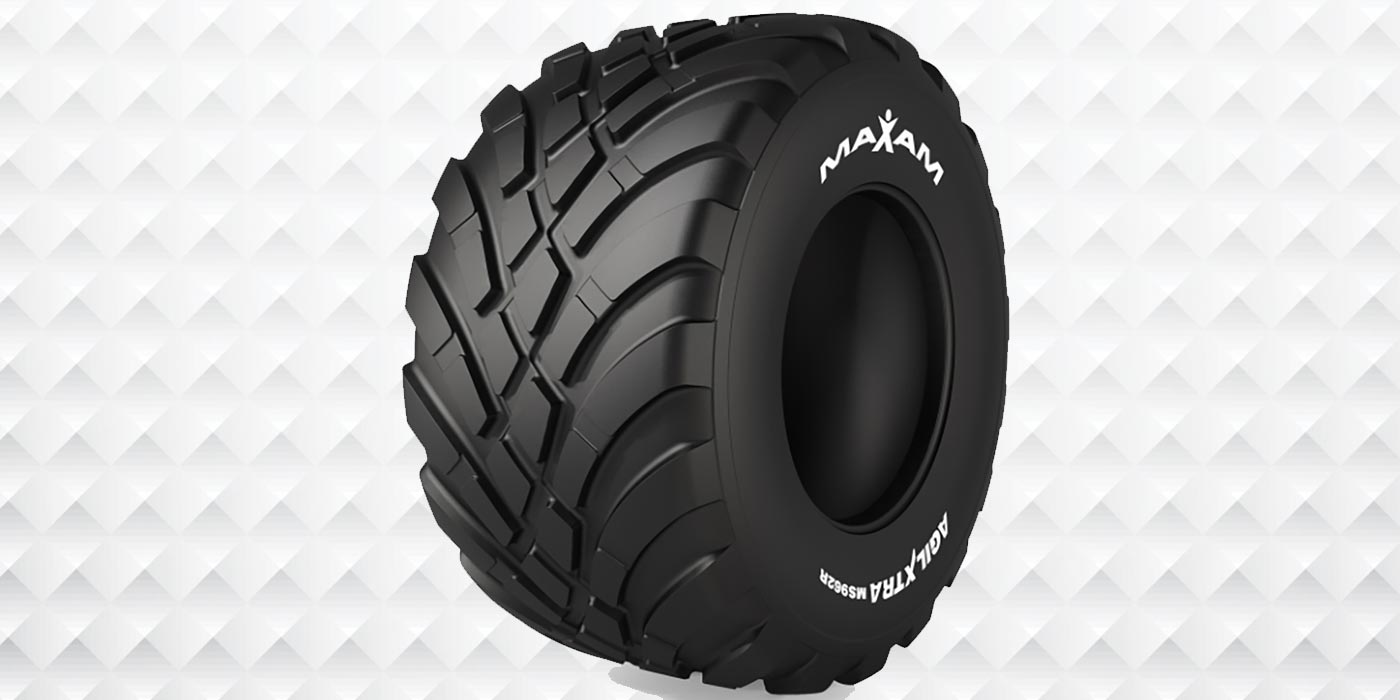The tire industry has seen a lot of changes over the years, especially in the auto, light truck and medium truck side of the business. Many of these changes improve performance and change the characteristics of a vehicle.
On the OTR side, there have not been many changes over the years except the move from bias to radial and the increased sizes of large haulage tires.
In recent years, we’re seeing the move to a wide-base 65-series aspect-ratio tire for loaders and articulated dumps and 90-series for haulage tires more frequently. These new aspect-ratio tires, especially the 65 series, come when the customers start to upgrade to new equipment. For many dealers this means a growth in inventory units due to a shift in customer demands. But in time, the 65-series tires will be a strong part of sales.
When it comes to ordering new equipment, the trend leans toward 65 aspect tires. There are a couple of reasons for this change: one is for stability of the equipment; and the other is additional load carrying capacity – all without changing the height of the equipment.
Productivity of equipment is critical for all operations in order for the customer to meet their goals. Many times this needs to happen without increasing the machine size due to several operational reasons. As the machines become more productive and the bucket or bed sizes are increased to meet the productivity demands, the standard 80-series tires will no longer be the tire of choice.
Most likely you are starting to see where the standard aspect-ratio tire is showing signs of being pushed beyond their limits. Where you see issues the most is in the bead area of the tires.
If they do not index on the wheels first you could find that the beads pull apart from the rubber due to the over deflection. This means that the customer is not able to put the tire back into service and most likely the new set will have the same issue.
The only way to slow down or resolve the bead issue with the standard 80 aspect ratio tire might be for the operator to reduce the load being moved and decrease the cycle times. In reality this will not happen, so the need to change to another aspect ratio might be the answer.
Many customers have seen a reduction in hours expected since the productivity has increased. There is always a trade-off in our business. To gain on one end often means something will be affected on the other end, which generally is the tire. What we find is that the size of the tire on many of the new machines has not changed over the years, while the machine’s output and productivity has increased.
This is why tire manufacturers have expanded their lineup to the wider 65-series tires in other sizes besides the larger loader tires, 33-inch rim diameter and up. As we all know, air is what carries the load that the tires are required to carry. By changing the aspect ratio of the OTR tire, this actually addresses two major issues: stability and load.
What is the difference between the 65 aspect ratio tire versus the 80 aspect ratio of the 15.5, up to the 29.5R25 tire? The wider profile has more air volume inside the tire, which allows the equipment to move more tonnage. This equates to a tire operating at or near the designed specifications, where the equivalent 80 aspect ratio tire would be over the designed technical specifications.
When 65-series aspect ratio tires are ordered on a new piece of equipment (except for the 550/65R25), you cannot go back to the conventional 80 aspect ratio tire. This is due to the fact that the rims for the 65-series tires are wider than the same overall diameter (OD) 80 aspect ratio tire. In some cases the overall diameter of the wheel is larger, which does not allow a standard 25-inch tire to be mounted.
As you will see in the table above, the rims are wider and the carrying capacity increased, which is why the 65 aspect ratio tire will continue to increase in popularity in the years to come. Also you will note that the PSI is less on the 65 aspect tires for the max load-carrying capacity versus the 80-series tires.
When you look at the 875/65R29 versus the 29.5R25, you will find that the OD between the two tires is basically equal (0.1-inch difference) even though the rims are different ODs. Where the advantage happens is in the difference in the width. The 65-series tire is 3.8-inches wider. In addition, the rim is also 2-inches wider versus the standard 25-inch rim that fits the 29.5R25 which is the OD. This difference is enough to allow a 15% greater load capacity at 5 mph at a lower air pressure. When the same tire is mounted on a 40T ADT an 11% increase in load can be obtained at 30 mph. Again, the air pressure is less.
As I stated earlier, the wider section width of the tire means a wide, flat footprint on the ground. This will help to increase both the stability of the machine and improve wear due to that wide, flat footprint. Operators will notice a far better ride with the wider tires installed. Another plus will be that the hours the tires should obtain should increase as there is more contact area on the ground to carry and move the load. Of course, this will vary based on the operation.
How can you help educate your customer on this? When they are ready to purchase new equipment, look at their long-term requirements. Plus, if you are finding that the current 80-series aspect ratio tires are being removed with a lot of bead damage (and it’s not caused by poor maintenance), the customer should consider taking the step up to the 65-series tires. This might help to address that issue.
Lower aspect ratio tires will continue to grow in popularity as the machines they fit reach their capacity with the standard 80-series tires. In addition, tires will become more readily available as manufacturers continue to expand production for these new sizes.
As we all know, changes in the OTR industry take time to implement, especially when everyone is content with what is being purchased today. But changes have and will continue to take place with new equipment. With all customers focused on maximizing production, the equipment manufacturers continue to change their machines to address the customer’s requirements. We have to step up as tire dealers to help the customers place the correct tire to match the output of the machines and obtain the expected hours at the lowest cost per hour.















